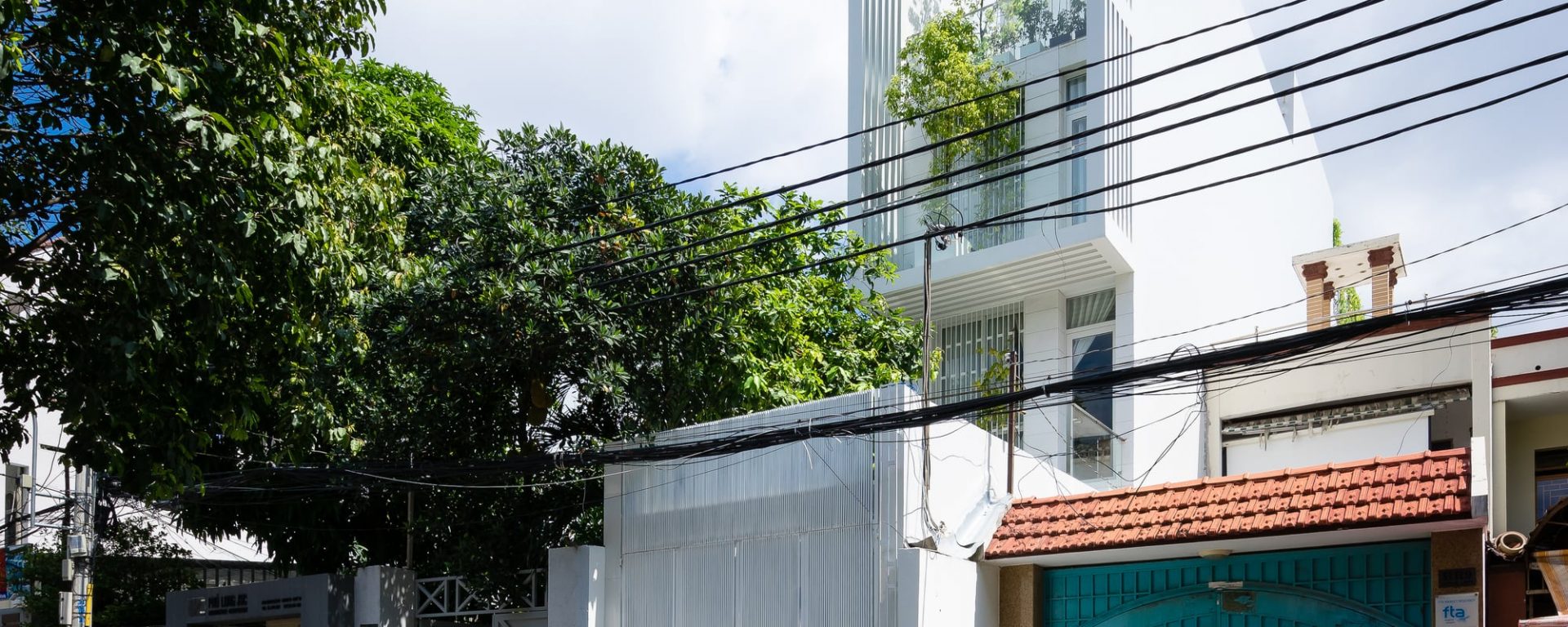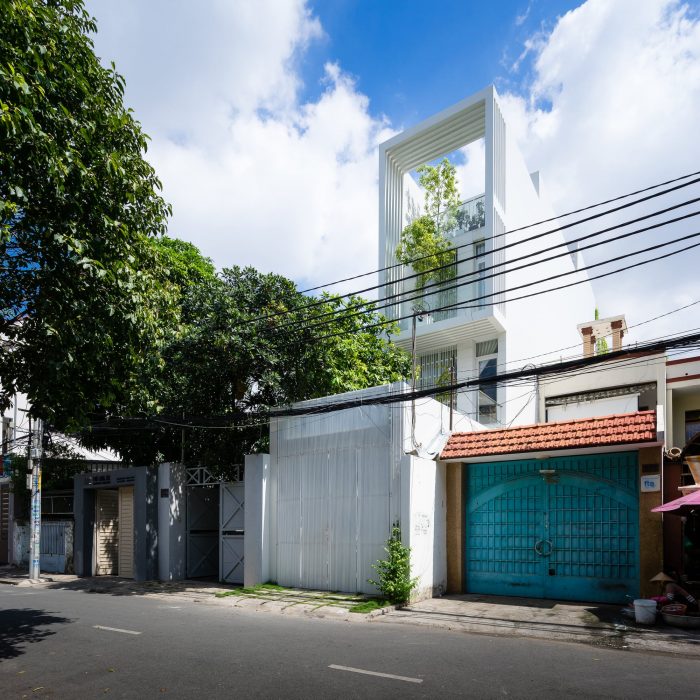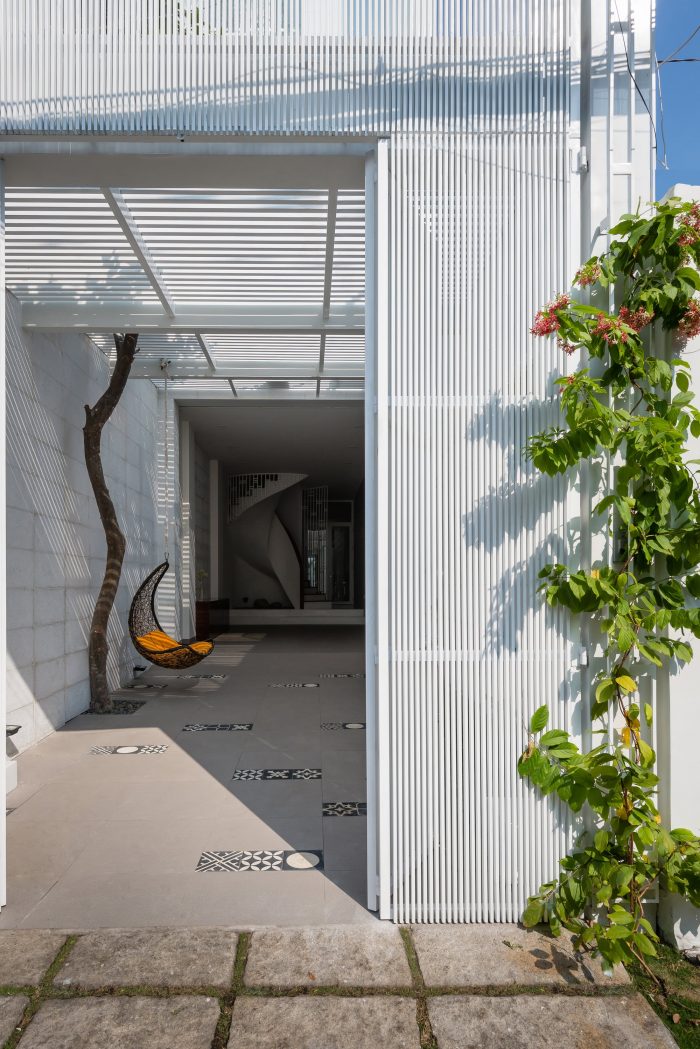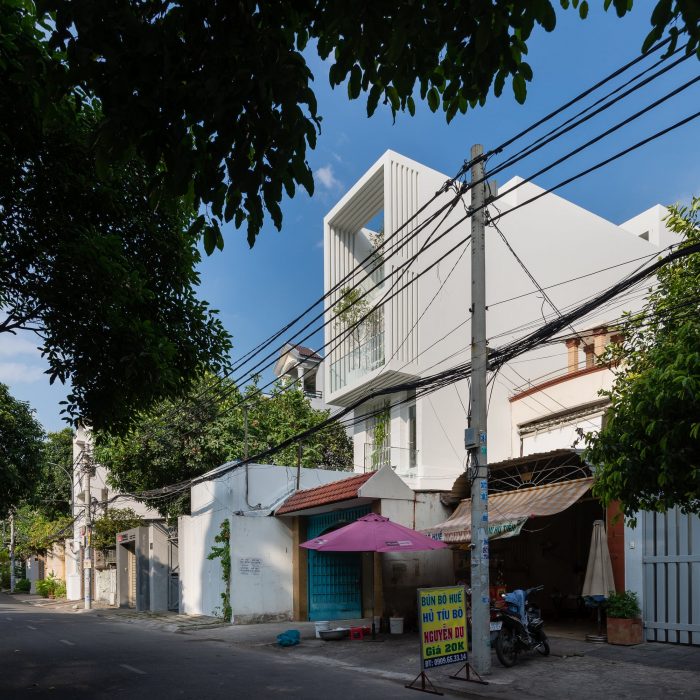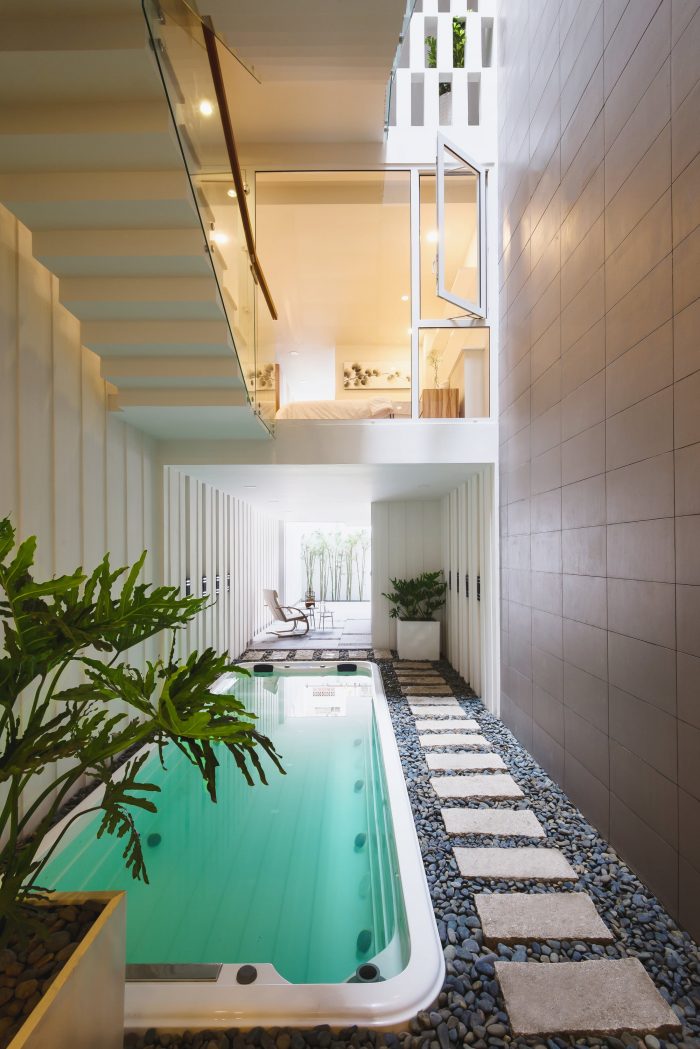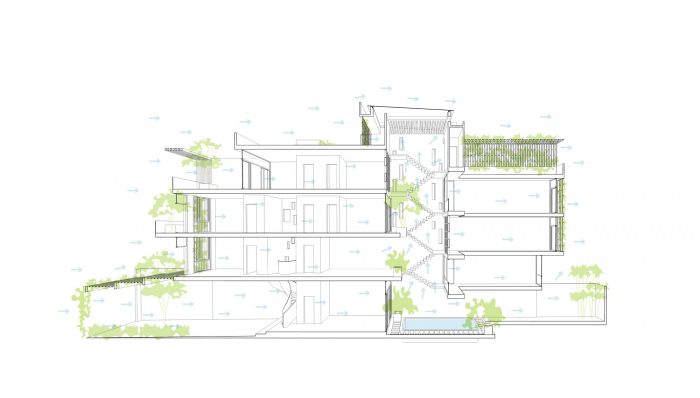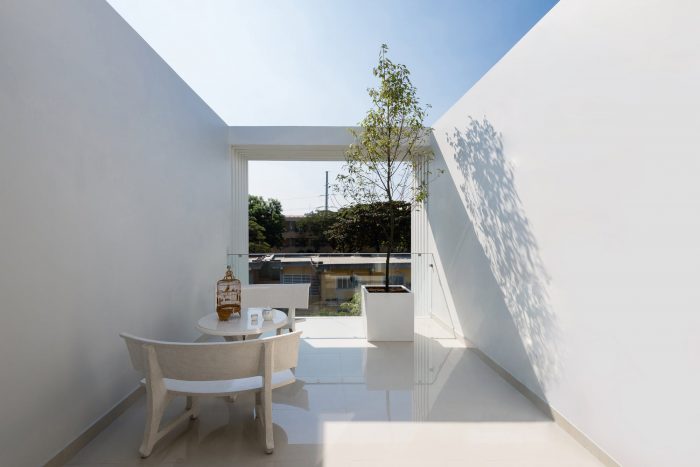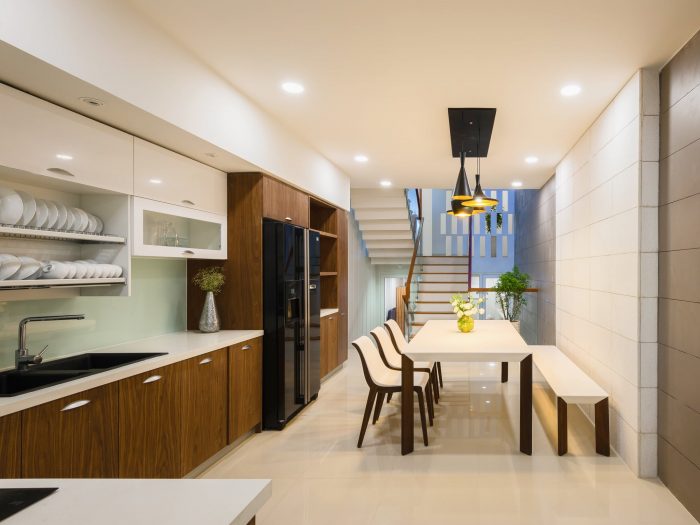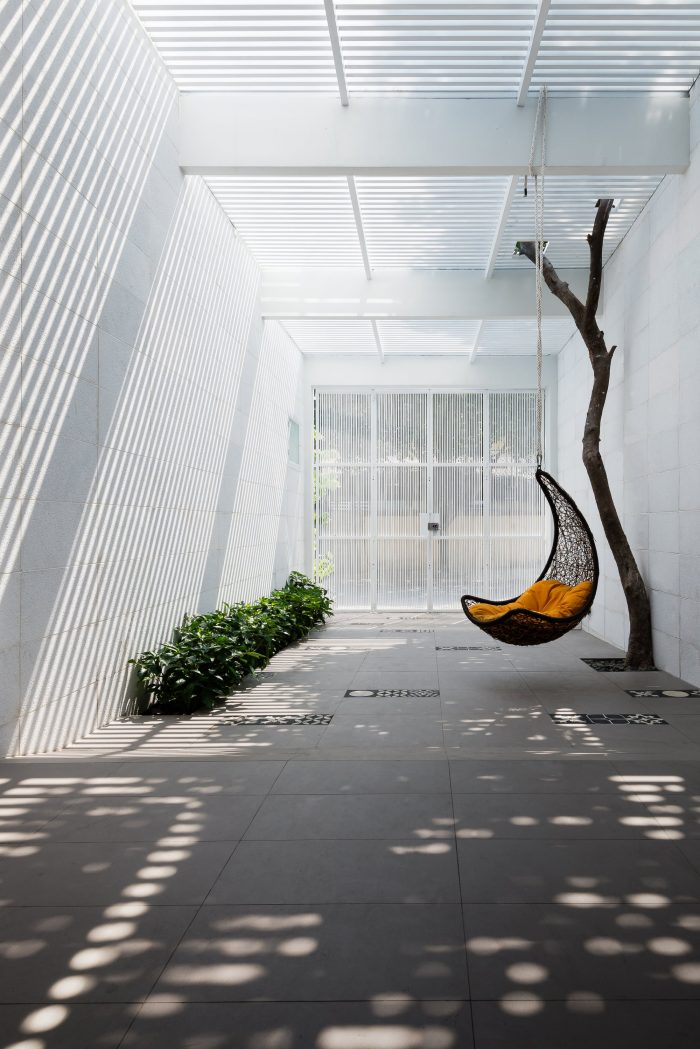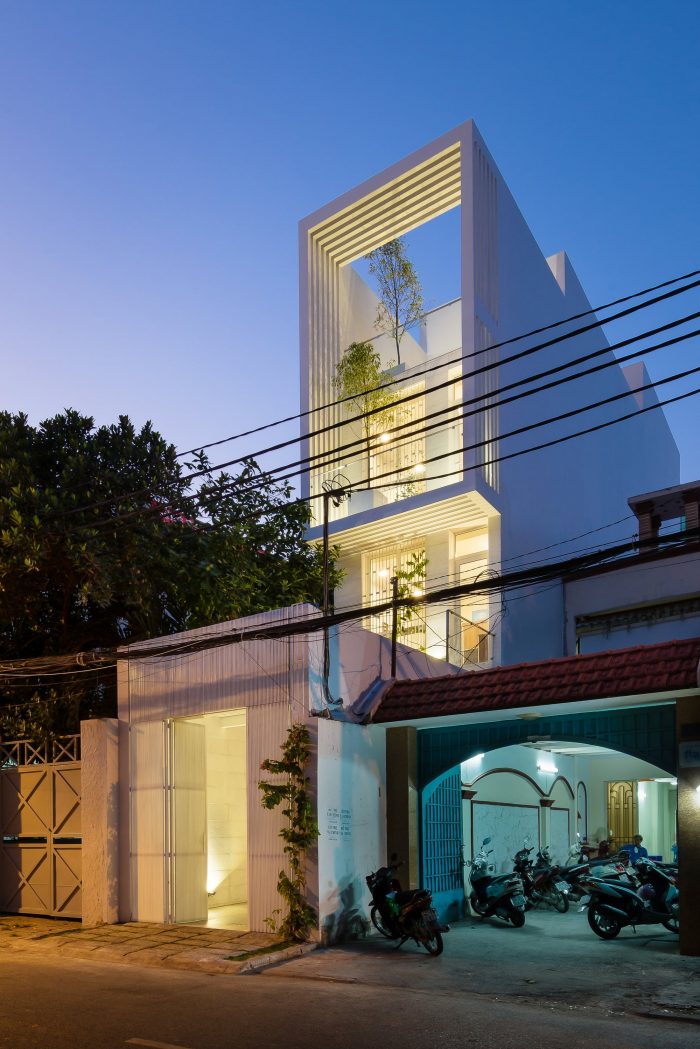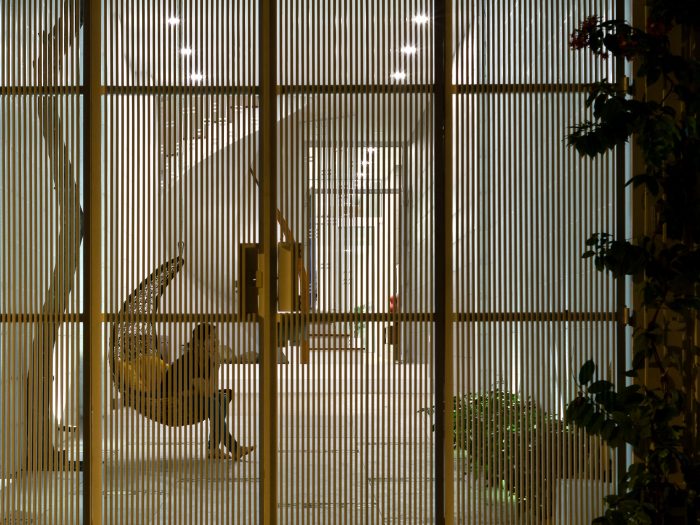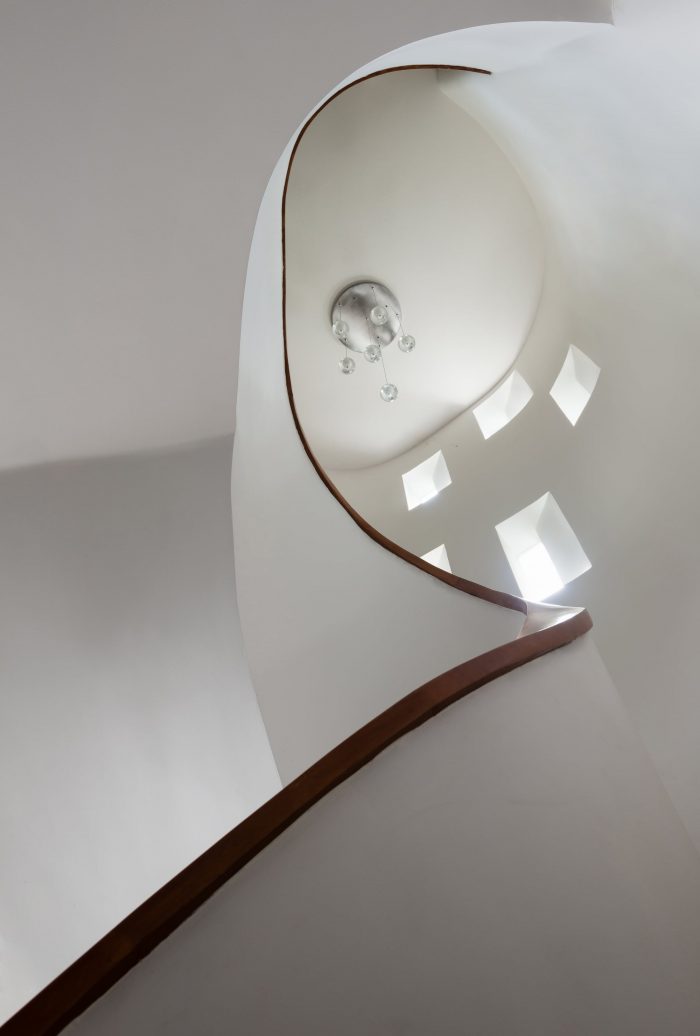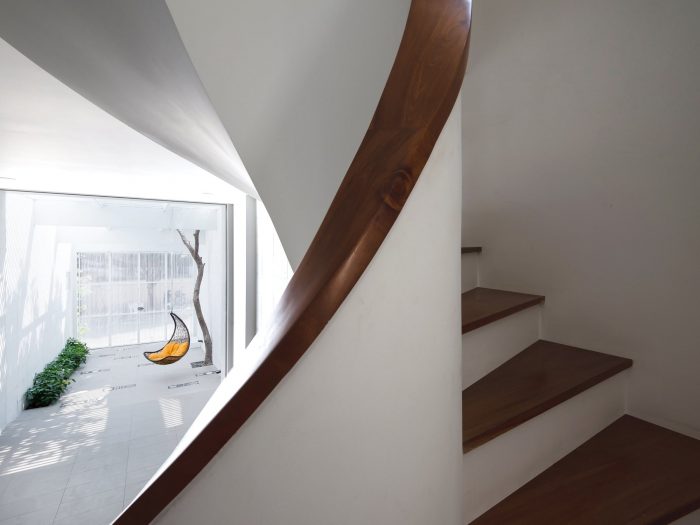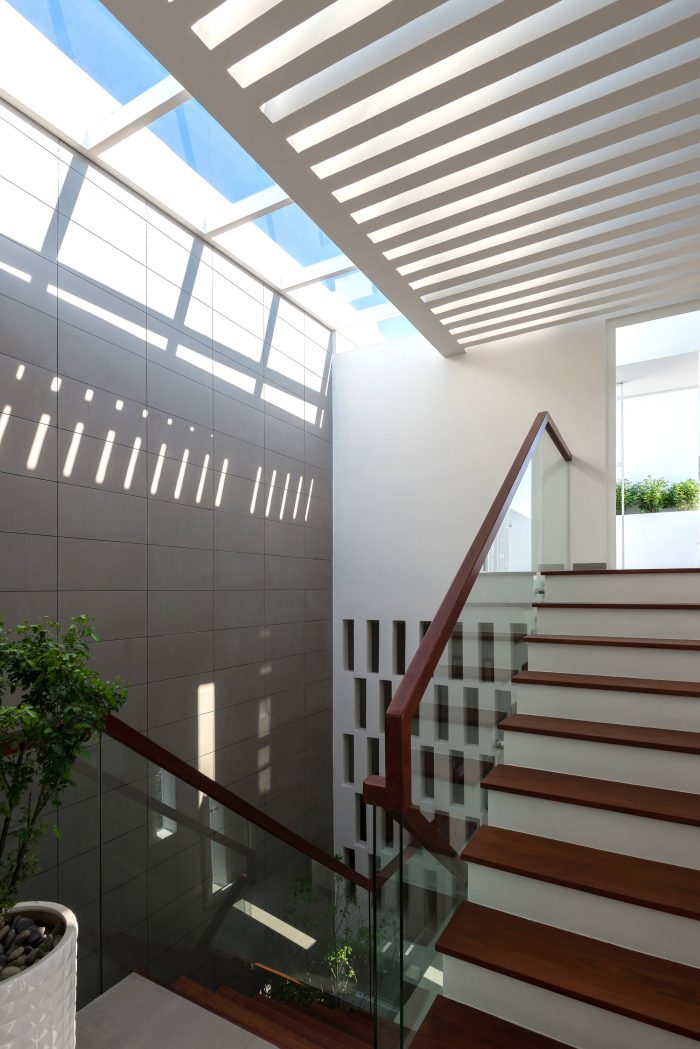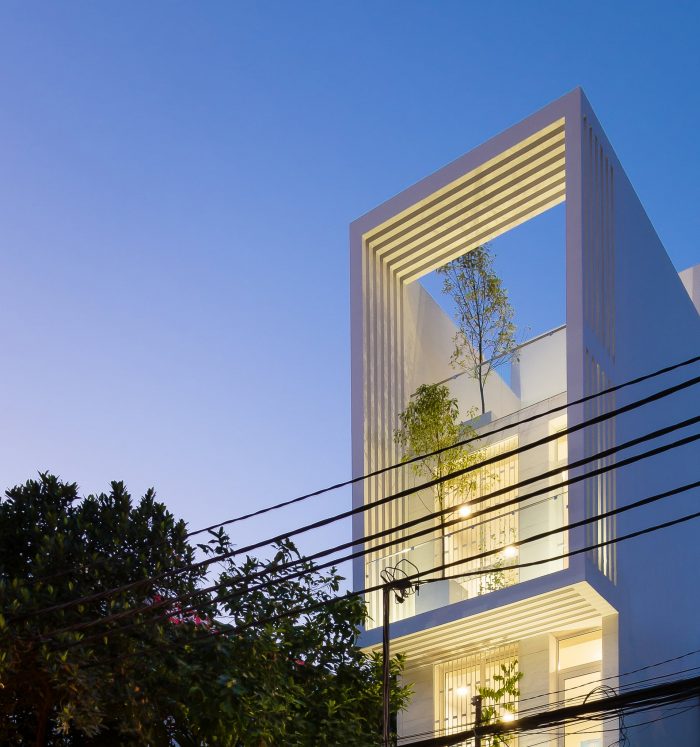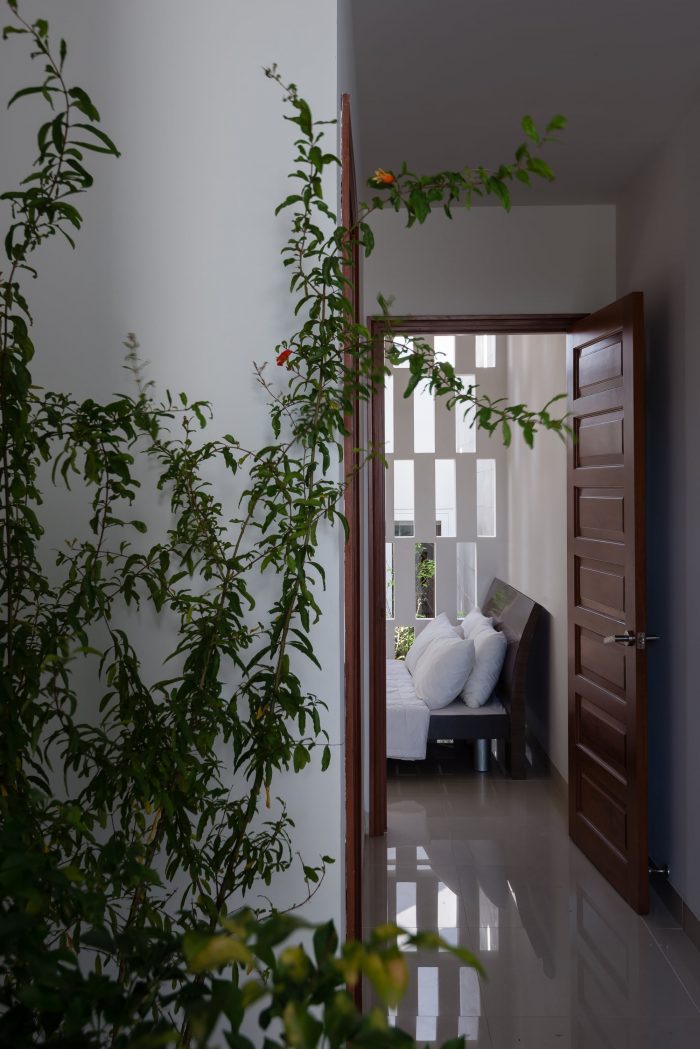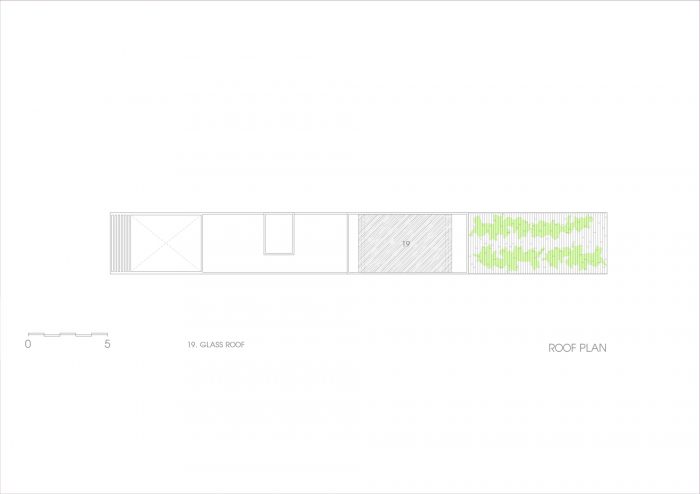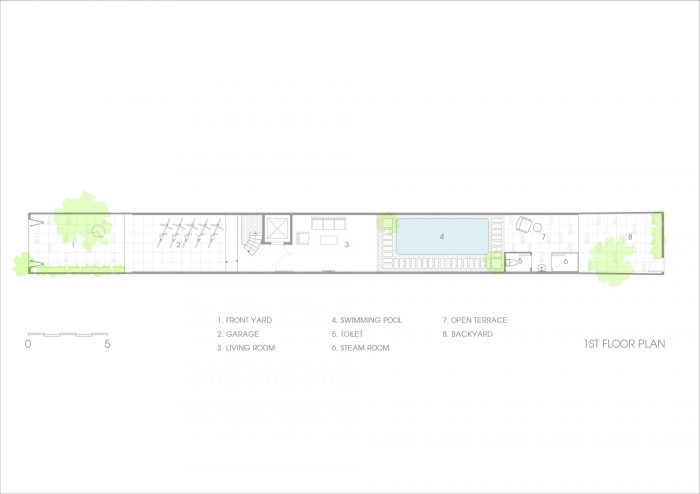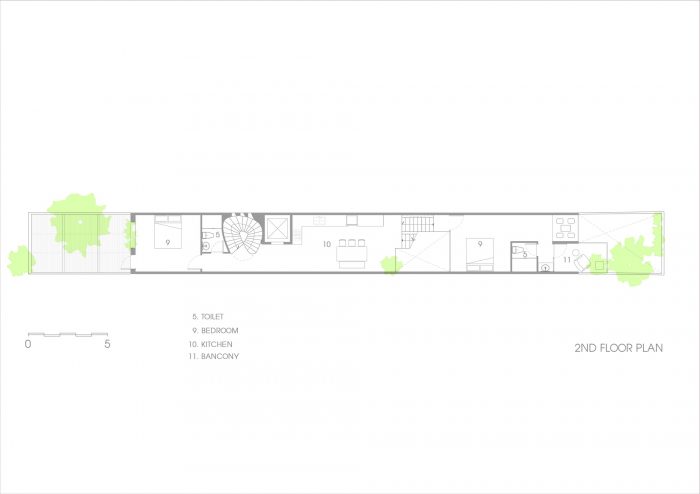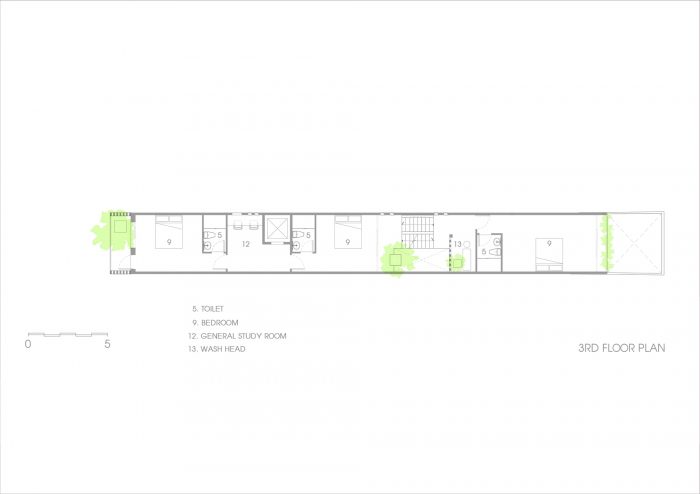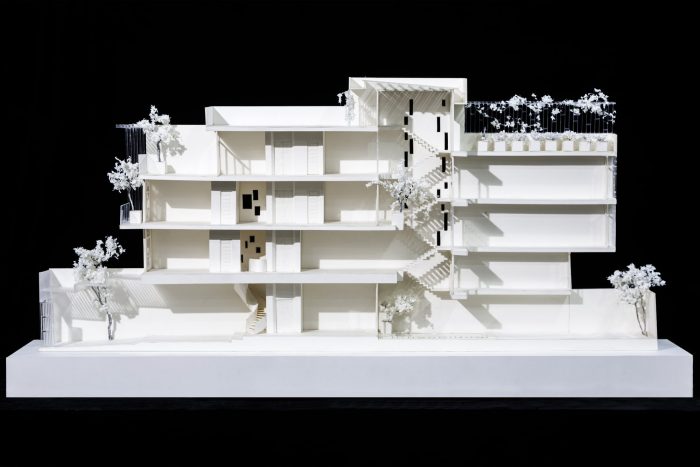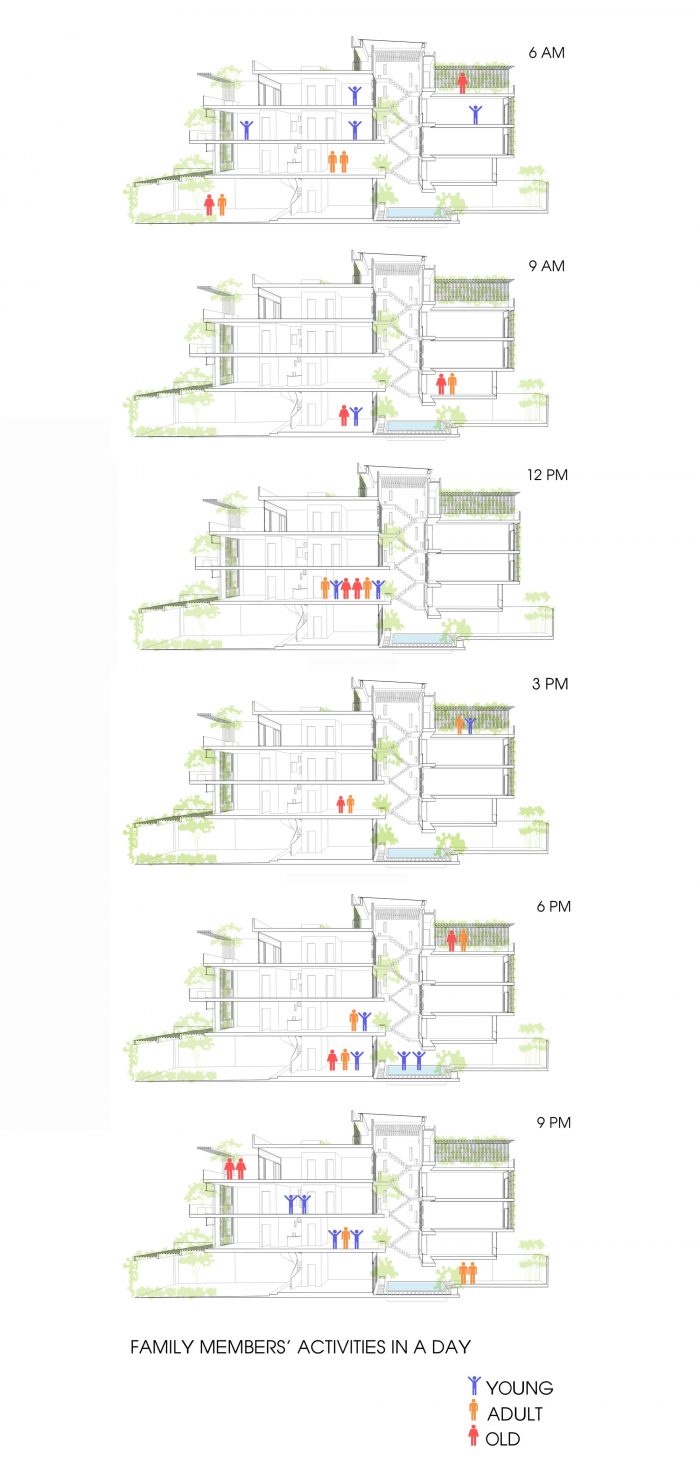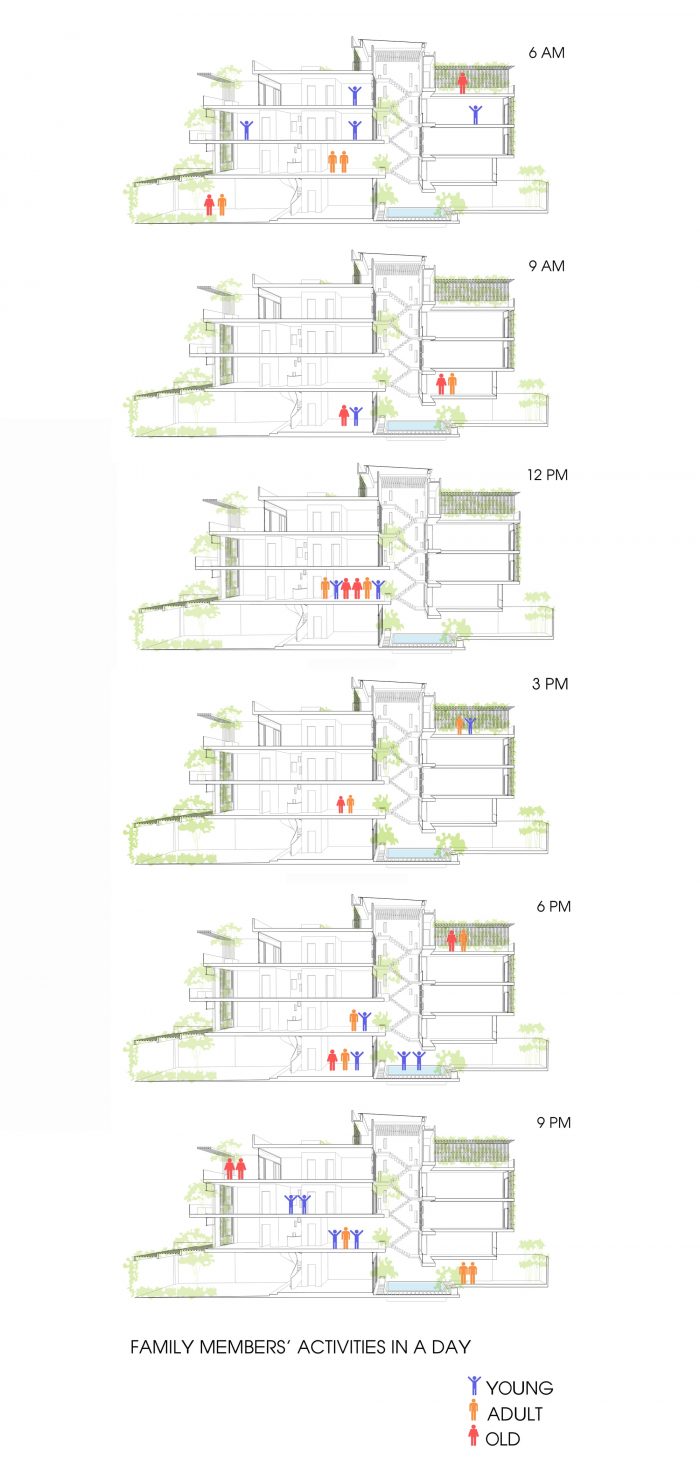几个亚洲城市的快速城市化进程大大减少了每人的生活面积。特别是在河内或胡志明市,大多数人,有时是大家庭,在狭窄的长筒形房屋中度过他们的生活,他们生活在与自然隔绝的黑暗和不通风的空间。
大家庭的长筒房一直是几代越南建筑师的一个复杂问题。
The rapid urbanization in several Asian cities has dramatically reduced the living area per person. Especially in Hanoi or Ho Chi Minh City, most people, sometimes extended families, spend their lives in narrow and long tube houses where they live apart from nature and in dark and unventilated spaces.
Long tube houses for extended families have always been a complicated question for generations of Vietnamese architects.
这座宽3.8米、长40米的建筑属于一个三代同堂的家庭,他们有不同的年龄、生活方式和兴趣。要求是每个成员都有个人空间。然而,需要有一些开放的公共区域,就像传统的越南房屋一样。它们将在几代人之间创造一种联系。
The building which is 3.8 meters wide and 40 meters long belongs to a 3-generation family with different ages, lifestyles and interests. The requirement is that there is personal space for each member. However, there needs to be some open common areas, just like in traditional Vietnamese houses. They will create a link between generations.
房子的前院、后院和露台是有新鲜空气的好地方,可以让成年人放松,恢复工作的精力。放学后,年轻成员可以在房子中心的游泳池玩耍。老年成员通常有空闲时间,所以在公共区域照顾植物并与其他成员定期接触,可以使他们感到快乐。
提出的通风和照明解决方案适合越南的热带气候。其目的是为了更有效地节约能源,帮助减少气候变化,使家庭成员更接近自然,并帮助他们对环境更负责。
The front yard, backyard and terrace of the house are great places with fresh air for adults to relax and restore their energy for work. After school, the young members can play at the swimming pool at the center of the house. The elderly members usually have free time, so looking after the plants and having regular contact with other members at the common areas can make them happy.
The ventilation and lighting solutions put forward are suitable for the tropical climate in Vietnam. The aim is to save energy more efficiently, help reduce climate change, bring family members closer to nature and help them become more responsible for the environment.
水和植物使房子的每个角落的空气更新鲜、更凉爽。风可以从两个外墙进入建筑。然后,它被由多层植物组成的双层皮肤过滤掉。最后,新鲜空气穿过生活空间,通过天窗排出。
从两个外墙进入房子的阳光被植物过滤。实际穿透房屋的阳光量是适当的。来自天窗的阳光被放置在符合太阳路径的位置的混凝土百叶窗过滤。在一天中最热的时候,这个百叶窗会减少阳光下楼的数量。此外,阳光仍然可以通过一些墙上的许多缝隙进入室内。
The water and plants make the air fresher and cooler in every corner of the house. The wind can go into the building from both facades. Then, it is filtered by the double skin made of layers of plants. And finally, the fresh air goes through the living spaces and exits via the skylight.
The sunlight that goes into the house from the two facades is filtered by the plants. The amount of sunlight that actually penetrates the house is appropriate. The sunlight from the skylight is filtered by a concrete louver placed in a position that matches the sun’s path. At the hottest time of the day, this louver will reduce the amount of the sunlight going down the stairs below. Moreover, the sunlight can still get inside through many slots on some walls.
斑驳的阳光出现在建筑的各个角落。在一天中的每个时间段,阳光都会照射进来,在房子的许多地方形成不同的形状。这给每个人带来了幸福和兴奋的感觉。
建筑师希望他们创造了一个新鲜、健康和有意义的生活空间,可以使家庭成员之间的关系更加密切,同时在日常生活中更加接近自然。
The dappled sunlight appears everywhere in the building. At each time in a day, the sunlight comes in and creates different shapes at many places along the house. This brings everyone feelings of happiness and excitement.
The architects hope that they have created a fresh, healthy and meaningful living space that can bring family members closer to each other, and at the same time, closer to nature in their daily life.
Architects: Cong Sinh Architects
Year : 2015
Photographs :Quang Tran
Contractor : Thanh An Interior & Construction Co.Ltd
Model Photographs : Hiroyuki Oki
Project Manager : Vo Quang Thi
Architect In Charge : Vo Quang Thi
Design Team : Vo Quang Thi, Nguyen Thi Nha Van, Phung Kim Phuoc
City : Ho Chi Minh City
Country : Vietnam

